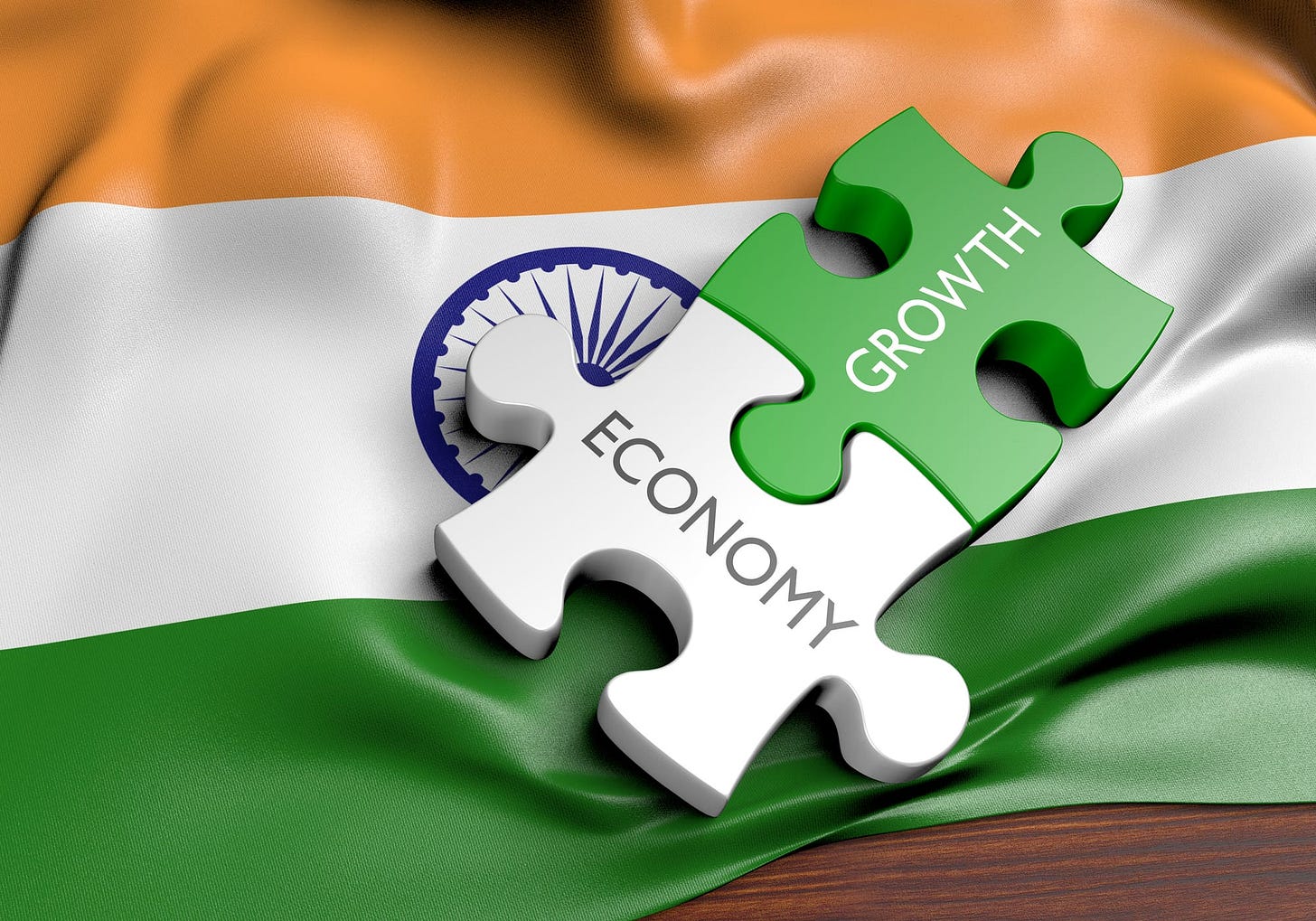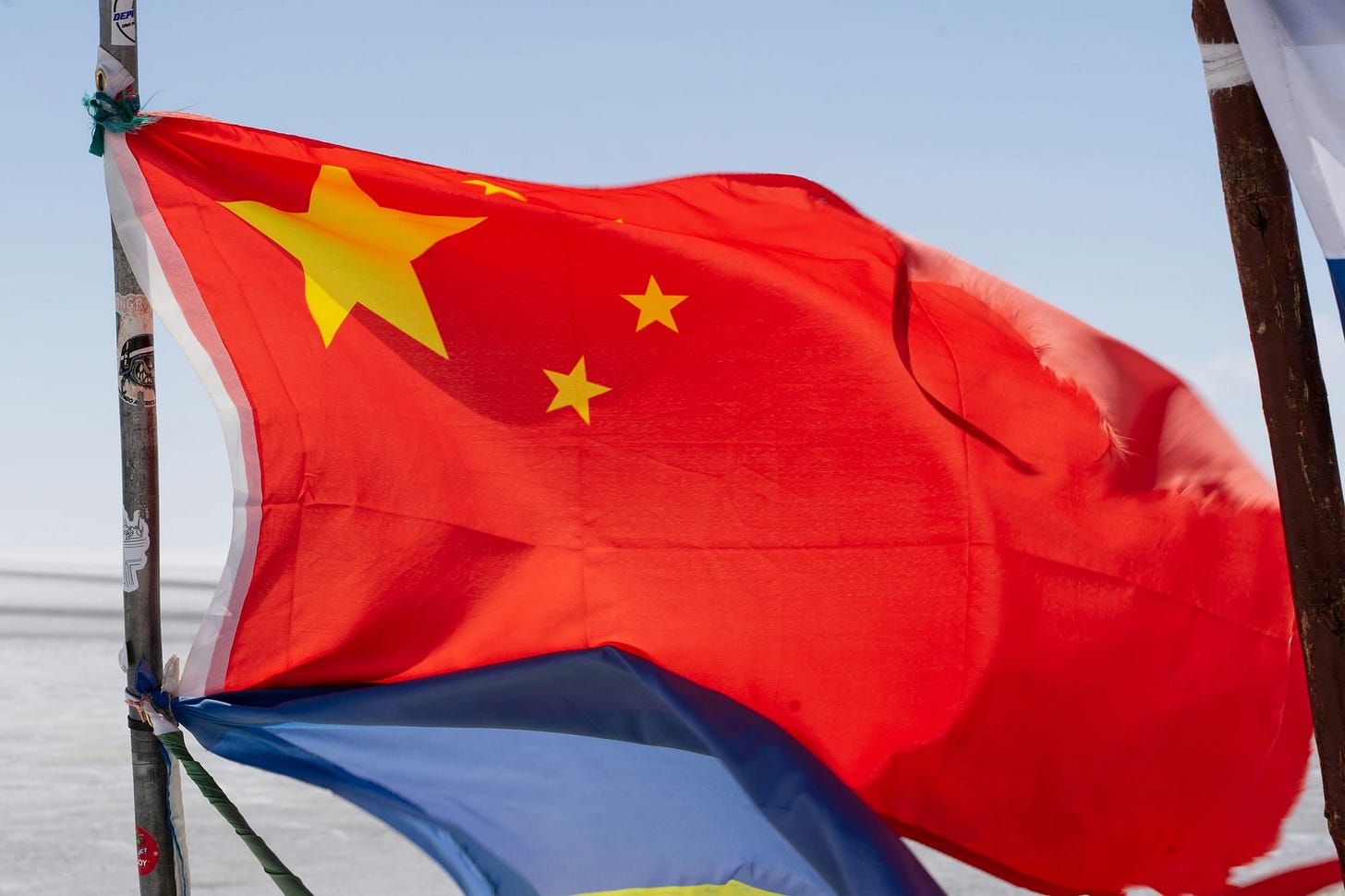Expanding Horizons: India’s Free Trade Agreements & IPR Challenges
IP Wave 08 01 produced using Adobe AI Generator by ASIA
0:00
/725.436
1×

India’s economic approach has changed significantly in the past 20 years, with Free Trade Agreements (FTAs) becoming a central part of its trade policy. Through these agreements, India aims to reduce tariffs, improve market access, and integrate its industries into global supply chains. FTAs are key to broadening export markets, attracting foreign investments, and fostering economic growth.
At present, India has signed 14 FTAs and 6 Preferential Trade Agreements (PTAs) with a mix of bilateral and regional partners, including ASEAN, Japan, South Korea, Australia, the UAE, and Mauritius. These agreements cover more than 50% of the global economy. India is also in talks with the UK, EU, Israel, and Oman, with the potential to extend preferential access to over 120 countries in the coming years.
FTAs bring both significant opportunities and challenges for India. On one hand, they allow zero-duty access to major markets and lower barriers in growing sectors such as IT, pharmaceuticals, and digital services. On the other hand, issues like low FTA utilization, trade imbalances, and domestic economic challenges show that there’s room for improvement in the way these agreements are implemented.
Trade Patterns and Challenges
Exports to FTA partners make up about 20% of India’s total exports, with annual trade volumes around $300 billion over the past decade. While this demonstrates the importance of FTAs, the benefits aren’t always evenly distributed. India’s trade deficits with ASEAN ($7 billion in 2021) and Japan ($5 billion in 2021) show an imbalance in trade. Conversely, India has a surplus with its South Asian neighbours like Sri Lanka, Bhutan, and Nepal, though this is comparatively limited.
India’s export mix under FTAs is still dominated by low-value goods like textiles, gems, and refined petroleum. In contrast, high-tech goods make up only 4% of India’s exports to FTA partners, while 16% of India’s imports from these countries are high-tech products. This shows a need for stronger competitiveness in advanced manufacturing.
A major obstacle to fully utilizing FTAs is the low rate at which Indian exporters use preferential tariff rates only 5–25%. The stringent Rules of Origin (ROO), which require 40% local value addition, add to the costs, making it harder for smaller exporters, especially micro, small, and medium enterprises (MSMEs), to take advantage of these agreements. Additionally, many MSMEs lack the resources or knowledge to navigate the complexities of trade regulations.
Key Agreements and Their Impacts
India’s FTAs yield diverse outcomes, depending on the specific economic and strategic needs of the partner countries. Looking at key agreements like the India-Japan Comprehensive Economic Partnership Agreement (CEPA), the India-Australia Economic Cooperation and Trade Agreement (ECTA), and the India-UAE Comprehensive Economic Partnership Agreement (CEPA), both successes and challenges can be seen in these.
The India-Japan CEPA, signed in 2011, covers about 90% of traded goods, including textiles, pharmaceuticals, and agricultural products. However, it has led to a trade deficit for India, with high-value Japanese exports such as automobiles and electronics dominating trade. The agreement’s provisions on services trade, which could have benefited India’s IT and professional services sectors, have not been fully utilized due to regulatory hurdles and cultural barriers.
The India-Australia ECTA, finalized in 2022, has been more beneficial, eliminating tariffs on 96.4% of Indian exports by value. Labor-intensive sectors like textiles, leather, and gems have especially benefitted. Additionally, easier visa processing for Indian professionals in fields like IT and engineering has opened up new opportunities for skill exchange. However, concerns remain about the sustainability of benefits, as India still exports mostly low-value goods. The agreement does signal the potential for boosting high-value sectors like automotive and medical devices.
The India-UAE CEPA, also signed in 2022, stands out as a major achievement, removing duties on 97% of tariff lines for Indian exports. It has notably boosted India’s pharmaceutical exports by simplifying the approval process for drugs approved by international regulatory bodies like the US FDA. Provisions for digital trade have also strengthened India’s position in the IT and e-commerce sectors. Nevertheless, challenges like diversifying exports and adding more value to goods exported to the UAE remain.
Intellectual Property Rights in FTAs
Intellectual Property Rights (IPRs) are increasingly important in modern trade agreements, particularly as they relate to patents, trademarks, copyrights, geographical indications (GIs), and trade secrets. For India, pharmaceuticals, IT, and cultural heritage, IPR provisions in FTAs present both opportunities and challenges. These provisions aim to align India’s domestic IPR laws with international standards while opening up new markets for Indian products and services. However, they also raise concerns in areas like affordable medicines, digital trade, and protecting traditional knowledge.
Opportunities Through IPR Provisions
IPR provisions offer significant advantages, especially in pharmaceuticals and the digital economy. India is known as the “pharmacy of the world,” producing 20% of global generic medicines. FTAs like the UAE CEPA expedite approval for Indian pharmaceuticals in international markets. For instance, UAE CEPA enables automatic registration of Indian drugs approved by regulatory bodies like the USFDA, reducing the time-to-market and opening new opportunities in regulated markets such as the EU and UK, particularly in the biosimilars segment.
In the digital sector, India’s $227 billion IT and digital services exports can benefit from FTAs that include provisions on data protection and digital trade. Agreements like the UAE CEPA cover e-commerce and cybersecurity, enhancing India’s competitiveness. Future FTAs may also include provisions to support emerging technologies such as artificial intelligence (AI) and robotics. Additionally, protecting GIs like Darjeeling Tea, Basmati Rice, and Pashmina Shawls can significantly increase the export potential of India’s agricultural and handicraft sectors.
Challenges in IPR Negotiations
Negotiating IPR provisions often presents a delicate balancing act between India’s development priorities and the demands of developed countries. Stricter patent enforcement, especially in FTAs with the UK and EU, could delay access to affordable medicines. With India being a key supplier of generic medicines, proposals to extend patent terms beyond the current 20 years could undermine India’s role in supplying low-cost drugs to low- and middle-income countries. Additionally, demands for exclusivity over clinical trial data could drive up costs and slow the production of generics.
In the digital economy, developed nations often push for stringent data protection laws, which can impose high compliance costs on Indian firms. There are also concerns about protecting India’s traditional knowledge, such as Ayurvedic medicines, from exploitation. India’s rich biodiversity and cultural heritage must be safeguarded in trade agreements to ensure fair benefits for local communities.
Sectoral Implications of IPR Provisions
The inclusion of IPR provisions in FTAs affects various sectors differently. In the pharmaceutical industry, India benefits from harmonized patent standards and quicker regulatory approvals, as seen with the UAE CEPA. However, extended patent protections and data exclusivity clauses could harm India’s competitive edge in producing generics and biosimilars.
In digital trade, provisions related to data flows, cybersecurity, and e-commerce improve the global standing of India’s IT industry. However, aligning these provisions with domestic data sovereignty remains a challenge. In agriculture and traditional knowledge, promoting and protecting GIs offers a valuable growth opportunity. India’s iconic products like Darjeeling Tea and Mysore Silk can increase exports if properly protected in FTAs, although ensuring robust protection is still an ongoing task.
Recommendations for Maximising FTAs
To optimize the benefits of FTAs, India must carefully balance IPR provisions to foster innovation while ensuring affordable access to medicines. Harmonizing domestic patent laws with global standards can attract investment and promote research and development, but demands excessive patent extensions or data exclusivity must be avoided. Safeguards like compulsory licensing must remain at the forefront to ensure public health priorities are met.
India’s FTA strategy should also focus on promoting and protecting GIs. The global market for GI-tagged products like Darjeeling Tea and Mysore Silk holds tremendous potential. Simplifying certification processes and increasing international recognition can help India tap into niche markets while protecting its cultural heritage.
Encouraging the inclusion of emerging technologies like AI and robotics in FTAs can drive India’s innovation agenda forward. Provisions that support international technology transfer and domestic innovation are key to building a knowledge-driven economy. Stronger enforcement of IPR and cooperation with trade partners to address issues like counterfeiting will enhance India’s competitiveness, particularly in the digital economy.
To ensure that FTAs are fully utilized, India should focus on raising awareness and building capacity among MSMEs. Simplifying compliance procedures and offering targeted support will empower smaller exporters to take full advantage of the opportunities these agreements provide. Promoting joint R&D ventures and offering incentives for innovation can help India become more self-reliant while also boosting its position in the global economy.
As India negotiates FTAs with the UK, EU, and other key partners, the focus must remain on seizing new opportunities in green technologies, digital trade, and labor mobility. These sectors represent India’s aspirations for sustainable and technology-driven growth. By addressing structural inefficiencies and refining the FTA framework, India can ensure that its trade agreements become engines of economic growth and global influence.
IP Round up
IP Wave Round up 08 01 produced using Adobe AI Generator by ASIA
0:00
/272.088
1×
Court Bans Counterfeit 'Rahul Mishra' Designs
The Delhi High Court granted an ex-parte ad-interim injunction in favor of Rahul Mishra, a prominent Indian fashion designer, against an online seller for trademark and copyright infringement. The plaintiffs, including Rahul Mishra and his registered company, argued that the defendant was selling counterfeit designer dresses under the domain ‘www.rahudress.com’ at significantly discounted prices, using stolen images of the plaintiff’s fashion designs. The plaintiffs hold exclusive rights to the ‘RAHUL MISHRA’ trademark and copyright over the designs and photographs featured on their official website, which were copied by the defendant. The court concluded that the plaintiffs presented a prima facie case for the injunction, noting that the defendant’s actions caused irreparable harm to the plaintiffs' brand and goodwill. The defendant was ordered to cease all activities related to the counterfeit goods, including online sales and advertising. (Source: SCC Online)
Copyright Case from 1987 Dismissed After 40-Year
In a copyright case from 1987, Parakat Vasu Krushnan Nair was discharged due to insufficient evidence and failed prosecution efforts. The National Film Development Corporation Ltd (NFDC) accused him of unauthorized reproduction and circulation of foreign films, violating the Copyright Act. Despite prolonged investigations, attempts to summon witnesses were unsuccessful, and the prosecution couldn’t provide necessary evidence. The court ultimately dismissed the case, citing inadequate material to frame charges. Advocate Sunil Pandey criticized the slow pace of justice, highlighting the 40-year delay. (Source: TOI)

China's Patent Surge
China's valid domestic invention patents reached 4.756 million in 2024, reflecting the country’s commitment to innovation. The number of patents in strategic emerging industries rose by 15.7%, totaling 1.349 million. China also maintains leadership in international patent applications, ranking 11th globally in the 2024 Global Innovation Index. The country has expedited intellectual property examination processes and focuses on enhancing IP commercialization and protection. Additionally, China’s intellectual property royalty imports and exports hit 356.41 billion yuan in 2024, further showcasing its growing IP utilization. (Source: Global Times)
Nokia’s 7,000 5G Patents Milestone
Nokia has achieved a significant milestone with 7,000 patent families declared essential to 5G, encompassing advancements in radio protocols, security, and device-network interfaces. Built on over €150 billion in R&D since 2000, Nokia’s portfolio includes 20,000+ patent families licensed to more than 250 companies globally. The company also emphasizes its commitment to open standards through FRAND licensing, fostering technology adoption. Looking ahead, Nokia is gearing up for 6G standardization, leveraging its leadership from pre-standardization efforts to shape the next generation of wireless connectivity. (Source: Telecom Talk)
Ashneer Grover's Name a Trademark
Ashneer Grover has successfully trademarked his name under class 41 of the Trade Marks Act, 1999, verified by lawyer Aditi Tuteja. This move protects Grover's brand identity and expands his commercial reach. Celebrity trademarks, while not explicitly addressed in the Act, can leverage laws to secure personality rights. Grover joins figures like SRK, Alia Bhatt, and Amitabh Bachchan in trademarking names to safeguard against unauthorized use. A trademarked name grants exclusivity, boosts marketability, and strengthens brand value. Critics, however, questioned its implications for others sharing the same name. (Source: TimesNews)
💡
Written by Shivani, Technical Assistance for Audio Generation by Raghav
References:
Ali, A. (2025, January 3). No evidence: Man acquitted in 1987 film’s copyright case. Times of India. https://timesofindia.indiatimes.com/city/mumbai/no-evidence-man-acquitted-in-1987-films-copyright-case/articleshow/116921771.cms
Arunima. (2025, January 4). Delhi High Court grants injunction in favor of Indian fashion designer Rahul Mishra against counterfeit dresses. SCC Online. https://www.scconline.com/blog/post/2025/01/04/delhi-high-court-grants-injunction-indian-fashion-designer-rahul-mishra-counterfeit-dresses-legal-news/
Business Standard. (2024, October 28). India-EU FTA negotiations: Priority and both sides pushing for an early deal, MEA says. Business Standard. https://www.business-standard.com/economy/news/india-eu-fta-negotiation-priority-both-sides-pushing-for-early-deal-mea-124102801011_1.html
Deccan Herald. (2023, November 1). UK officials pressured to drop intellectual property demands in India trade talks. Deccan Herald. https://www.deccanherald.com/world/uk-officials-pressured-to-drop-intellectual-property-demands-in-india-trade-talks-2751100
Global Times. (2025, January 7). China’s intellectual property utilization reaches new heights in 2024. Global Times. https://www.globaltimes.cn/page/202501/1326422.shtml
Inamdar, N. (2022, August 25). India's IP policy: A balancing act between development and protection. BBC. https://www.bbc.com/news/world-asia-india-62559040
The Hindu. (2024, February 17). Brave new world: On the India-European Free Trade Association agreement and IPR. The Hindu. https://www.thehindu.com/opinion/editorial/brave-new-world-on-the-india-european-free-trade-association-agreement-and-ipr/article67853988.ece
India Briefing. (n.d.). Why India? Free Trade Agreements (FTAs) and tax agreements. India Briefing. https://www.india-briefing.com/doing-business-guide/india/why-india/india-s-international-free-trade-and-tax-agreements
Kripa, B. (2025, January 7). Nokia achieves 7,000 patent families milestone essential to 5G. TelecomTalk. Retrieved from https://telecomtalk.info/nokia-7000patent-families-milestone-essential-to-5g/987501/
Pandey, D., & Unnikrishnan, M. (2023). Free Trade Agreements (FTAs) by India: Review and implications for future. Indian Institute of Management Ahmedabad. https://www.iima.ac.in/sites/default/files/2023-03/MCFME_FTAs.pdf
Press Information Bureau. (2022, July 20). India strengthens IP system with new initiatives. PIB. https://pib.gov.in/Pressreleaseshare.aspx?PRID=1843902
Singh, P. (2025, January 3). Ashneer Grover's name is now trademarked: What does this mean? Times Now News. Retrieved from https://www.timesnownews.com/business-economy/industry/ashneer-grovers-name-is-now-trademarked-what-does-this-mean-article-116913898
U.S. Department of Commerce. (2024, January 12). India: Protecting intellectual property. Trade.gov. https://www.trade.gov/country-commercial-guides/india-protecting-intellectual-property
Zee Biz. (2024, March 10). A brief history of India’s 14 free trade agreements since 2014: Benefits and countries signed with. Zee Biz. https://www.zeebiz.com/economy-infra/news-a-brief-history-of-indias-14-free-trade-agreements-since-2014-benefits-countries-signed-with-know-details-279592







